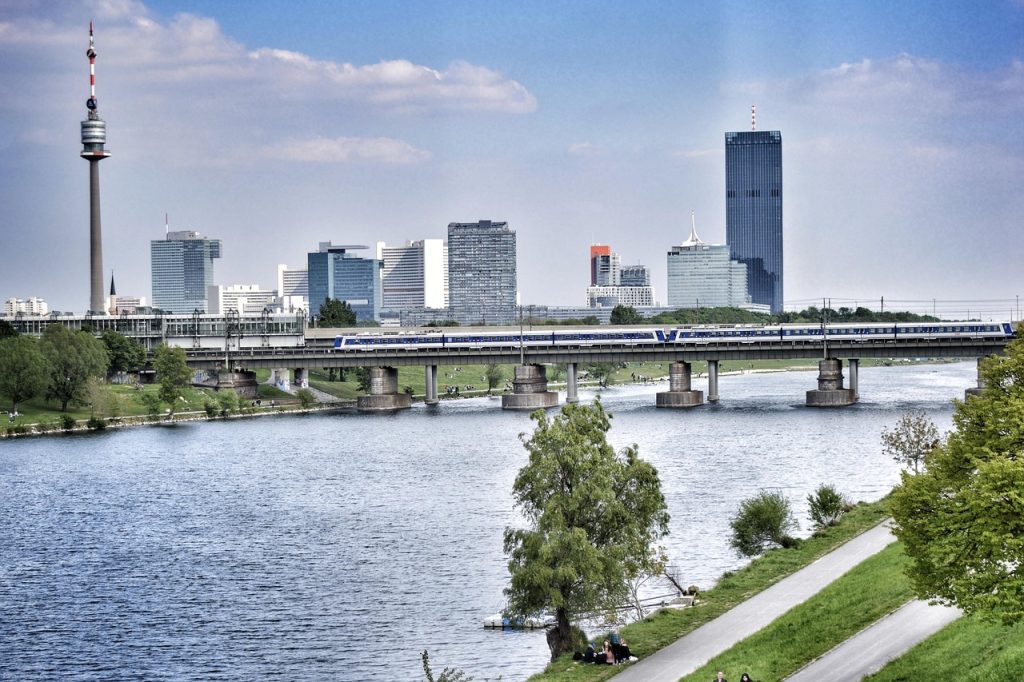September will go down in Austria’s history as the warmest on record. For long stretches, it was as warm as in the middle of summer, with little sign of autumn. With a temperature deviation of more than three degrees, an ancient record from 1810 was broken. By the end of the century, such a September could be the norm. Meanwhile, 2023 is on track to be one of the warmest years on record.
The fact that the days are now shorter than the nights is not currently noticeable in the temperatures in Austria. Even though there are still traces of colorful trees in many places, the foliage is as green as in summer. Some lakes, such as the Wörthersee, the Mondsee, and the Alte Donau, still entice swimmers with water temperatures around 20 degrees. Only the calendar indicates autumn; the weather remains in late summer.
According to the evaluation of GeoSphere Austria, September 2023 is the warmest in the 257-year measurement history in Austria. It was the ideal summer month, warmer than the average June. The deviation from the average for 1991 to 2020 was 3.3 degrees in the lowlands, while in the mountains, the difference was even more significant at over four degrees. From a climatological point of view, September is thus advancing into new dimensions.
The previous record was set in 1810.
The warmest September date was in the distant year 1810, with a deviation of 2.8 degrees from the long-term average. At that time, Franz I ruled the Austrian Empire, his daughter Marie-Louise married Napoleon Bonaparte in that year, and the Tyrolean freedom fighter Andreas Hofer was executed. In September 1810, Salzburg came under Bavarian rule.
The fact that the record has held up for so long despite global warming is almost like a sensation. However, this is only the case at first glance, as other ancient monthly records are still kept in Austria. April (1800), May (1811) and August (1807) also still show highs from earlier centuries, according to GeoSphere Austria. Back then, the measurement network was not comparable to today’s, with only a handful of stations throughout Austria.
Old records with expiration date
The old records prove it could also be hot in the past with appropriate weather conditions. However, only now and then, there are almost too warm months and a clear warming trend due to the increase of greenhouse gases. This will gradually break all the old records, estimates Marc Olefs, head of the Climate Impact Research Department at GeoSphere Austria. However, when exactly and in what order is a matter of chance? The October record, which had stood since 1795, was set only last year.
September is no longer a climate “anomaly.”
It is remarkable that September, of all months, set a new monthly record because, until recently, it was the only month in Austria, along with October, that had shown little warming tendency in recent decades. September was one of the last bastions seemingly resisting artificial global warming in this country.
In recent years, however, the picture has begun to change. Since 2016, September has also been warming up more noticeably in Austria. And so a former autumn month is increasingly becoming the extension of summer, a development climate scientists have long predicted and is now coming true.
The hot September 2023 is not a local or regional phenomenon limited to Austria. In Germany and Switzerland, for example, previous highs will also be significantly exceeded, and even on a global scale, this September is likely to be the warmest yet.
More summer days than ever before
This unique September in Austria was due to long periods of high-pressure weather with subtropical air masses, rarely interrupted by fronts with more excellent Atlantic air. This resulted in an unprecedented number of summer days, i.e. days with temperatures above 25 degrees. Most of the provincial capitals set new records. Eisenstadt, where every single day of the month was warmer than the long-term average, had 23 summer days. Only in Innsbruck and Klagenfurt do the old records remain.
However, the station with the most days above 25 degrees is Langenlebarn near Tulln in Lower Austria. Considering the forecast for Friday and Saturday, there will even be 26 summer days; never before have so many been registered in Austria in September at one station. The historical high was 25 summer days in Silberegg in Carinthia in September 1961.
With up to 32 degrees in Bad Deutsch-Altenburg, there was a heat wave in the first half of the month, occurring only in very few September. Innsbruck experienced five days in a row with temperatures above 30 degrees; over the entire summer, the Tyrolean capital had 38 hot days, corresponding to a good 60 percent increase compared to the long-term average.
Record warmth also in the mountains
The extreme heat did not spare the mountains either. On the Brenner (Tyrol), 27.5 degrees were measured on September 10; the old monthly record was 26.6 degrees in 2006. Also, on the Rudolfshütte and the Sonnblick in the Salzburg Tauern stations with long measurement series, it was warmer than ever in September. On average, in September, the observatory on Sonnblick has 20 nights with frost; this year, there were only five. For the glaciers, this month was the super-GAU at the end of a hot summer, and the ice melt continues.
It was also hot for hiking tours.
The hot September also means 2023 will likely be one of the warmest years in Austrian measurement history. “If October, November and December proceed similarly to the average of the last ten years, 2023 will be one of the three warmest years in Austria’s 257-year measurement history,” says climatologist Alexander Orlik of GeoSphere Austria.
Extremely dry in places
Due to the long periods of high pressure, the sun balance in September is above average, and the rain balance is below average. On average, the sun shone 40 percent longer than usual in Austria. Salzburg, for example, had more hours of sunshine than in an average July, although it was light for three hours longer every day.
On the other hand, only half as much rain fell as in an average September. This will change little, even if a few rain showers pass through on Saturday. The month was particularly dry in northern Waldviertel (Lower Austria), Lungau (Salzburg), and Upper Styria. Zeltweg, with only nine litres per square meter, has rained less than ever since measurements began. It was even drier in Litschau, with only six litres of rain per square meter.
A September for the future
Climate researcher Olefs sees this September with so many warm records as an outlier and as further evidence of how our climate is changing and the speed at which the changes are taking place.
He said that not every September in the next few years will be as warm as this year. Weather patterns and other influences determine a natural variation. But a September like this year’s may become the norm by the end of the century unless climate protection measures can be significantly tightened globally.
A consistently summery September may be an enticing prospect for some people. Conversely, temperature deviations of three to four degrees mean even more extreme heat waves in midsummer months than we are experiencing now and the virtual end of snowfall in the lowlands in winter.
- source: orf.at/picture: Bild von Yair Ventura Filho auf Pixabay
This post has already been read 2406 times!



